How stress impacts our brains
As scientists and researchers, our days are filled with meetings, experiments and deadlines. Such busy agendas can become overwhelming and even stressful when obstacles keep mounting up with no quieter days in sight.
It is important to differentiate between “good stress”, which involves rising to a challenge with a positive outcome, and “toxic stress”, including situations in which one needs to handle difficult events without sufficient support. In between lies “tolerable stress”, which refers to difficult events that you overcome thanks to a supporting network.
The natural response to challenges is for your body to release hormones like cortisol and adrenaline to provide you with the necessary energy and resources to handle the situation. At the same time, your body shuts down non-essential metabolic functions.
As the central organ of stress, your brain is most affected by these hormonal changes. It perceives and determines what is threatening. Based on what it encountered before, the brain induces a behavioural and physiological response to the stressor. This means that your brain is always learning and collecting experiences.
Neuroplasticity: the brain adapting
As such, our brains are fascinating dynamic organs. Like muscle tissue that grows with exercise and shrinks when unused, your brain constantly adapts to experiences. It responds to life events by replacing and forming new connections between neurons, remodelling dendritic cells and turning over synapses.
This structural and functional plasticity is the reason why we keep learning, but also forgetting unused information. Learning a new activity, language or instrument is a challenging situation for your brain. But when you overcome this “good stress”, your brain releases dopamine to trigger the reward-related center making sure you’re not forgetting the newly learned skill.
On the other hand, when encountering “toxic” or chronic stress due to extremely high or constantly high cortisol levels, your brain can suffer from being activated and alarmed outside of the norm. Experienced over a longer period, this can lead to disrupted memory, executive function, difficulties in processing emotions and other cognitive issues.
As you may see, dealing with stressful situations has helped humans survive for thousands of years. Yet, it is important for your brain to go back to the baseline levels regularly. Just like your muscles, your brain needs to relax and regenerate.
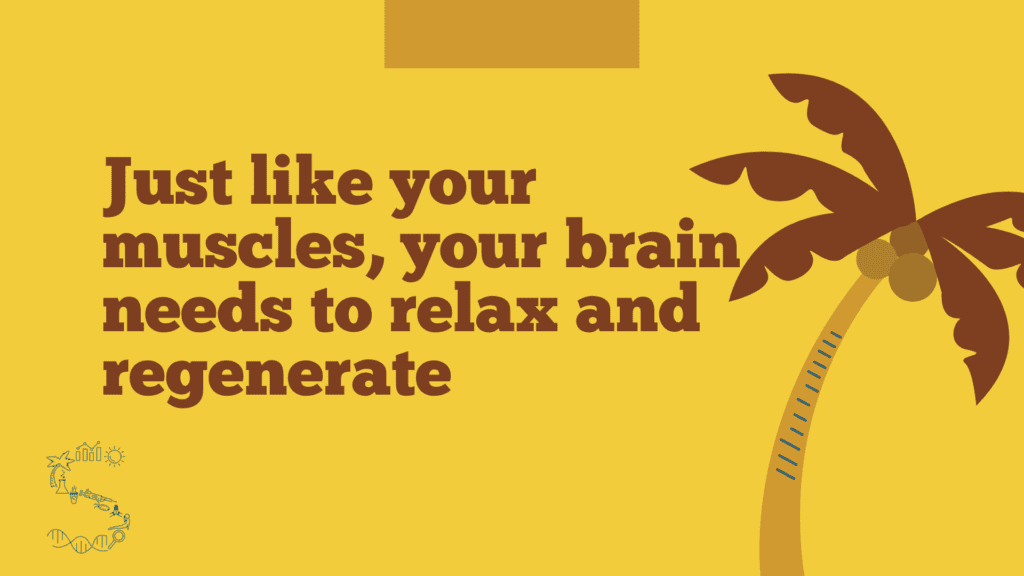
You probably already know what is working for your brain to relax after a long day in the lab. Only recently, did I discover colouring as an activity to calm down, process unfinished thoughts and get into a meditative state.
When researching for this article, I did not find any studies that specifically looked into how colouring as a meditative activity impacts the brain. Instead, I want to discuss what meditative activities are and why I think colouring might have similar benefits for your brain.
Meditation comes with several cognitive benefits
Researchers increasingly recognise meditation as an efficient technique for stress relief and are investigating its basic mechanisms. As I was reading about meditation and its effects on the brain, I came across this scientific definition of meditation:
The authors mean that during a meditative activity, your focus stays on your meditation object, which is an activity. Mostly, this activity can be breathing, listening, doing Yoga or colouring.
It is crucial to understand that one who meditates successfully self-corrects their focus when it shifts away from the meditative object. By focusing on just the activity, it eventually becomes passive. The authors describe this process as releasing and letting go of all mental activity.
When this balanced state of focus and release is reached and maintained, one finds oneself in a flow or meditative state. It is a state of awareness of awareness. You become so immersed in the meditative object, that your whole being is completely intertwined with the object. No clear boundaries exist at that moment between you and the object.
Dealing with thoughts during meditative activities
Like many, I find it difficult to achieve this meditative state just by focusing on my breath. My mind starts wandering in all directions.
For me, a meditative object needs to be external. I can reach that meditative state by listening to the sound of the waves, doing a repetitive activity like colouring or an automated activity like singing, dancing or playing beach volleyball.
Whatever you choose as your meditative object, it comes down to how you handle your thoughts. The idea is to focus on the object to prevent thoughts from popping up. And if thoughts arise, the key is to acknowledge them and let them go bringing back the focus to the object.
Colouring, a movement-based meditative activity
One meditative and stress-relieving activity rose during the COVID-19 pandemic: adult colouring books. Surprisingly, the meditative object in that case represents a body movement. Studies showed that for many it becomes easier to focus on a meditative activity involving body movements to reach a “flow” state.
While focusing on the colours, shapes and patterns, the rhythmic nature of colouring helps the body relax, thus reducing stress and offering a mental break. Also, colouring is accessible to people of all skill levels. So, both young and old can gain from its effects making it a joyful and creative activity for anyone.
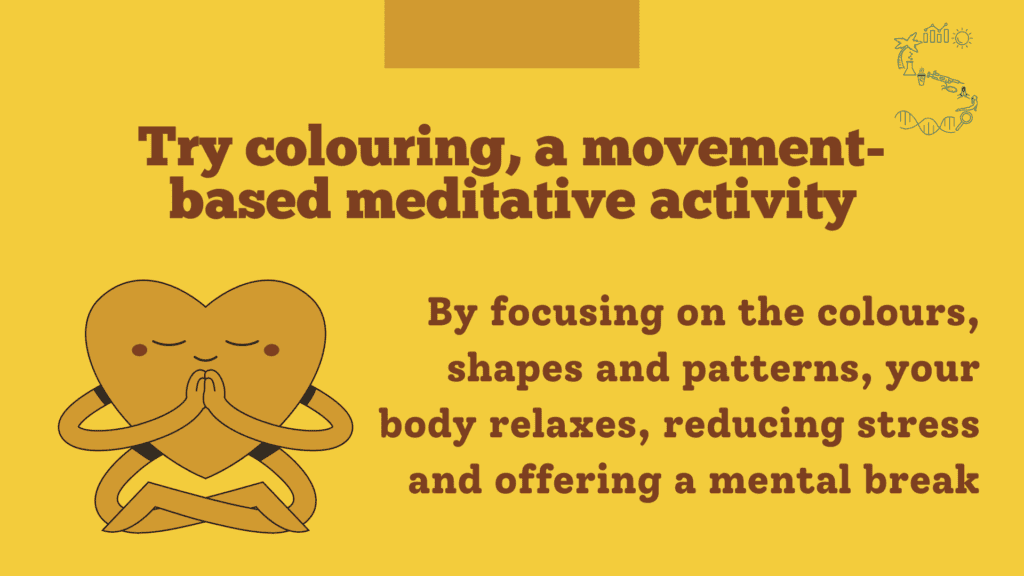
I am sure that like other meditative activities, colouring triggers the release of dopamine. A completed colouring piece can feel like an accomplished task, making you happy and probably even proud. This can also have positive effects on your reward centre and emotional regulation.
As a meditative activity, colouring probably also positively impacts sleep quality, stress relief and inner calmness. I feel as calm and relaxed after colouring a page as after doing a Yoga session. And I would not be surprised if colouring also benefited brain functions, such as memory and learning or even helped improve neuronal disorders. But this is for scientists to figure out in detail.
Incorporating meditative activities for improved mental health
Studies showed that even one session of a meditative session can have profound effects on cognitive behaviour. Hence, you probably won’t lose anything by trying a meditative activity like colouring, just once. Even if you’re completely inexperienced in meditation, it may be worth seeing whether you can give your mind a break from your daily lab stress.
As we recently published a microbiology colouring book, you can download our free colouring sheets and see how you like the colouring activity.
Already a single 10-minute mindfulness meditation session can enhance your attention and cognitive flexibility. So, maybe you want to get started with a guided meditation such as our Sunny Meditation exclusively recorded with busy scientists in mind. Whatever meditative object you choose, you’re already doing great just by trying!
Escape the busy lab life with meditative activities
As we’ve discussed in this post, your brain reacts very strongly to stressful situations due to its neuroplastic ability. To relax the brain and bring it back to baseline, relaxation activities, like meditation and colouring, can be beneficial. By incorporating these practices into your life, you provide your brain with the tools to navigate stress, let go of confusing and negative thoughts and emotions and promote overall well-being.
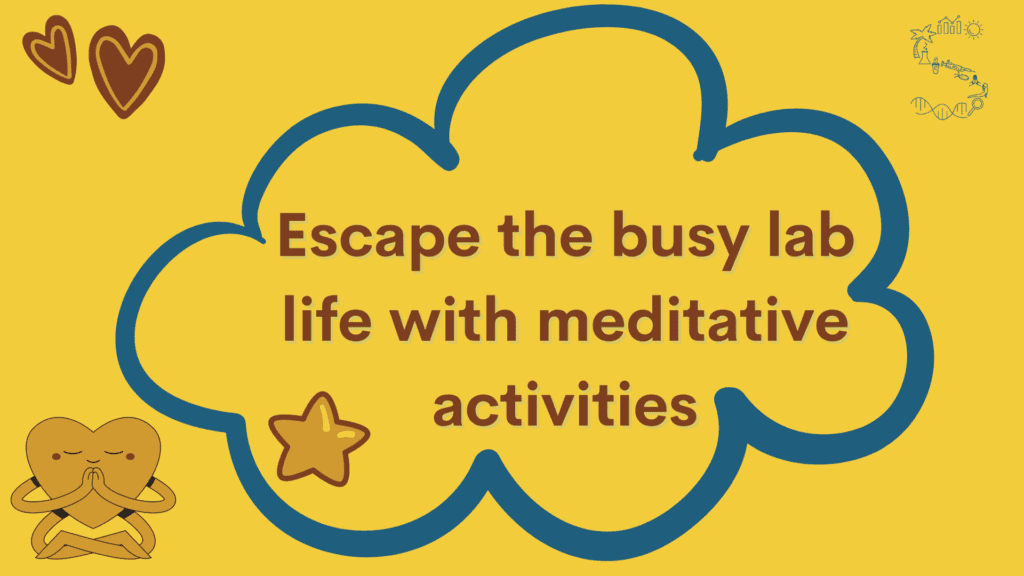
Have you tried colouring as a meditative activity? Did you feel any positive effects, like being calmer and more relaxed?
Feel free to share your experiences with the meditative activities below and inspire others on their journey to a calmer mind.


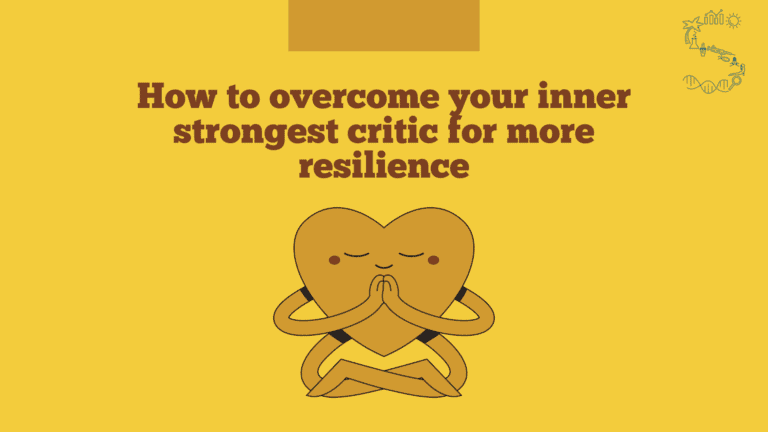
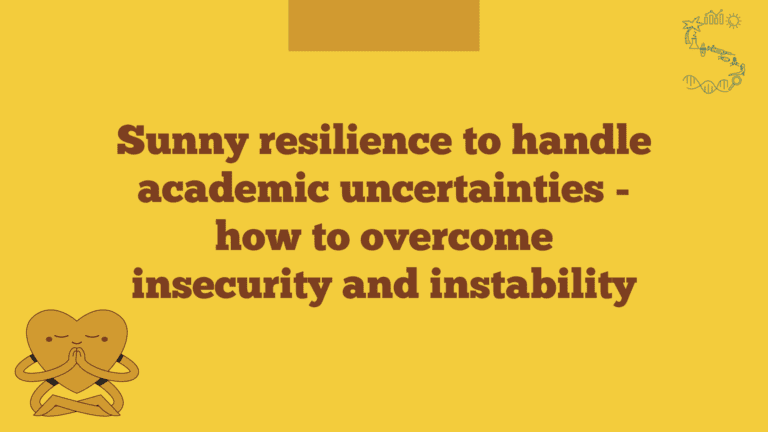
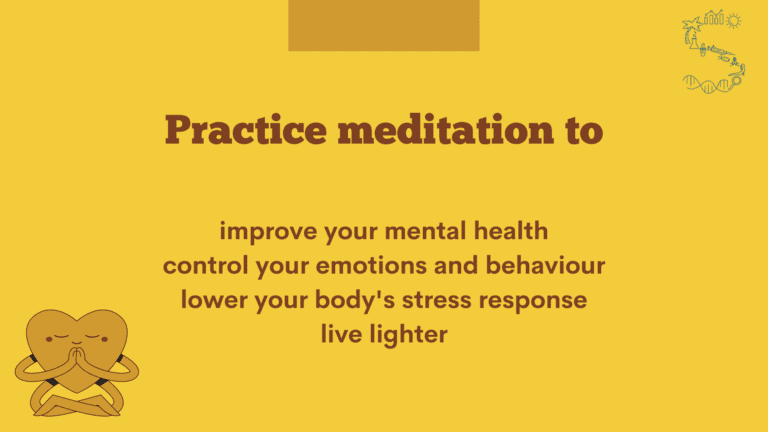
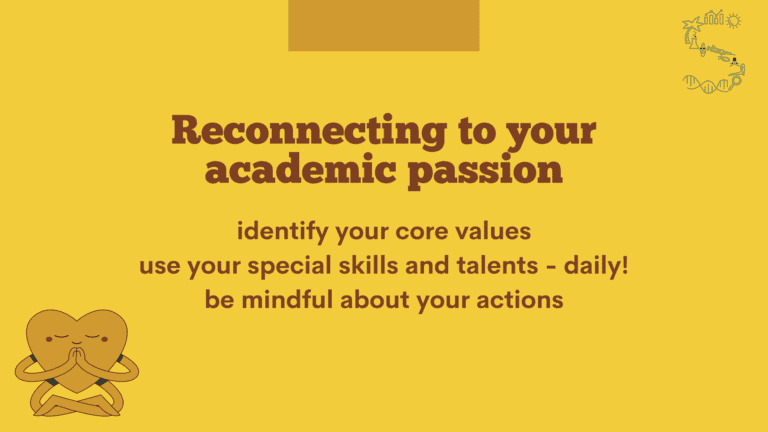
4 Responses